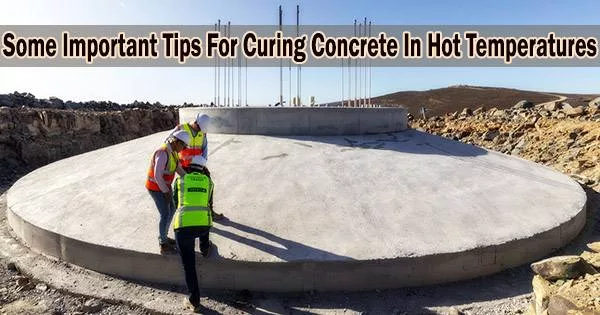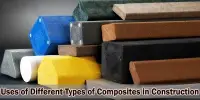Concrete curing is the process of maintaining moisture and temperature levels to allow the concrete to properly harden and reach its maximum strength. In hot temperatures, concrete curing can be challenging as high temperatures can cause the concrete to dry out too quickly, resulting in cracking and reduced strength.
Preventing Hot Weather Concreting Issues
Due to the unpredictability of the weather, heated temperatures can lead to a number of problems with concrete. Concrete can firm up too quickly in hot weather, which is a typical problem that is frequently challenging to manage. But there are steps that may be done to stop problems with hot weather concreting, enabling a successful project.
One of the most crucial things to take into account when working with concrete is the temperature range. Most concrete mixes perform best when temperatures are between 50-80 degrees Fahrenheit. Temperatures outside that range can cause the concrete to set too quickly, making it difficult to work with. Checking the temperature of the area before starting the project is a must.
Knowing the temperature range is vital, but it’s also critical to take into account any external conditions that could affect the temperature. This can include the wind, humidity, and sun. In warmer conditions, water evaporates more quickly from the concrete mix as it solidifies. Concrete will quickly harden if the air is dry and deficient in humidity. A windy day can also speed up the drying process.
Making ensuring the concrete mix is properly mixed is essential for avoiding problems with hot weather concreting. To make a homogeneous mixture of cement, sand, water, and other materials, concrete must be well mixed. Inconsistencies in the final product’s strength and curing time may result from improper mixing of the mixture.
The amount of water added to the mix is also important. Water is needed by the concrete to hydrate the cement, enabling it to cure when temperatures are high. Concrete that has been exposed to too much water may weaken and crack more easily. It’s crucial to apply just enough water to give the concrete a plastic-like consistency.
Finally, some additives can be used to assist regulate how quickly concrete sets up in hot conditions. These additives, known as “retarders” and “accelerators,” can either slow down or speed up the curing process of the concrete. This allows the concrete to be more workable in hot temperatures.
Use the Right Concrete Mix
Using the proper concrete mix is crucial for achieving successful concrete curing in hot climates. The mixture must, after all, endure the heat without breaking or showing other symptoms of harm. Here are four professional suggestions to help you choose the correct concrete mix for curing in hot conditions.
First, consider the aggregate type. It’s crucial to choose a mix with the proper type of aggregate for the temperature circumstances you’re working with because different varieties of aggregate have varied heat tolerances. For instance, in warmer areas, aggregate with a higher heat capacity, such as quartz or granite, is advised.
Second, use a concrete mix that has a high air content. A higher air content will assist absorb the heat and cushion the concrete, reducing the likelihood of craters and cracking as a result of heat.
Third, use a concrete mix that has a low water-cement ratio. A lower water-cement ratio will ensure that the concrete is less likely to crack due to excessive heat.
Finally, use a concrete mix with delayed-setting cement. Due of the delayed setting of the cement, it can sustain higher temperatures without cracking. This adds an additional layer of security while the concrete is hardening in sweltering heat.
By keeping in mind these suggestions, you can make sure that the concrete mix you choose is capable of curing in high temperatures. With the perfect mixture, you can proceed with your project with assurance, knowing that the concrete will hold up to the weather and set properly.
Protect Concrete from Sun and Wind
Concrete can develop cracks, stains, and damage from exposure to the sun and wind over an extended period of time. To protect concrete from the sun and wind, a few important steps can be taken.
First, it is important to ensure that the concrete is properly cured. This is essential when it’s hot outside since the heat can speed up the curing process and dry the concrete too soon. Keep the concrete wet for 48 hours after pouring in order to reduce this. During this time, shield the concrete from direct sunshine as the heat may shorten the curing process.
Second, it is important to use a curing compound with concrete during hot weather. This is a liquid that is applied to the concrete surface to restrict the quantity of moisture lost. This can assist protect the concrete from drying out too rapidly and cracking in conjunction with the right curing time.
Third, it’s crucial to pick a location for concrete installation that is protected from severe winds. Concrete may dry out too quickly due to wind, which increases the likelihood of cracking. A rough surface and a propensity for erosion can be caused by the concrete due to the wind’s ability to carry dust, dirt, and other material, which can then settle on the surface.
Finally, protecting concrete from the sun’s UV rays is important. Concrete can fade from prolonged UV exposure, which increases its susceptibility to stains and discolouration. When concrete is curing, you might want to use a UV-resistant sealer to shield it from the sun’s rays.
By following these steps, you can help protect concrete from both the sun and wind. Doing so will help to ensure that your concrete lasts for many years to come.
Plan Ahead for Hot Weather Concreting
When it comes to concrete in hot weather, it’s best to plan. For the greatest outcomes, it is essential to plan ahead so that concrete may be poured and cured in the proper settings. As the temperature rises, be sure to be aware of potential problems and make plans accordingly.
Begin by considering the timing of when concrete is to be poured. It is advisable to start as early in the day as possible if temperatures are likely to rise. By doing this, the concrete will be able to begin curing before it becomes too hot. When temperatures are projected to climb, cover the freshly poured concrete with protective materials like draperies. This will provide shade and keep the concrete from overheating.
Set Up a Mist System
A mist system is an effective strategy for curing concrete in hot temperatures. A mist system is an automated system that supplies the freshly poured concrete with the ideal ratio of water, moisture, and airflow. Even in the highest conditions, this contributes to the creation of the perfect healing environment.
Setting up a water distribution system that distributes water over the concrete’s surface uniformly is crucial when building a mist system. The typical method for producing a fine water mist that covers the surface is a high-pressure pump. The pump needs to be positioned in a safe area and run continuously. In order to guarantee the stability of the water distribution system, the pump must also be connected to an anchoring system.
It’s also critical to create a mist curtain to reduce evaporation and promote effective curing. The curtain protects against the elements and is constructed from many layers of plastic sheeting. This promotes a more balanced curing environment by regulating the local temperature and humidity levels.
Finally, the area should be properly ventilated. Setting up many ventilation fans in the area is crucial since good ventilation can assist prevent moisture buildup. This will facilitate an efficient curing process for the concrete by maintaining the temperature in the curing environment.
Install Shade Structures
When curing concrete in sweltering temps, the right shade structures can help you save time, money, and effort. You may shield your concrete from the elements and maintain the right temperature for curing by building a shade structure. Here are a few tips for installing shade structures for curing concrete in hot temperatures:
First, consider the purpose of the shade structure. Shade structures can be utilized for more intricate environmental management or for simple sun protection. The materials utilized can change depending on your goal. Generally speaking, it is recommended to use a UV-resistant material, like a tarp or aluminum sheets.
Next, choose the right location. Consider the amount of wind and sunlight the area receives while deciding where to put your shade structure. The greatest places for shade constructions are those that receive direct sunlight and no breeze.
Finally, decide on the size and shape of the shade structure. There are many different sizes and types of shade structures, so it’s crucial to pick the one that will work best for your curing requirements. Factors to consider include:
- The size of the concrete slab.
- The distance from the sun and wind.
- The amount of space available for the shade structure.
You can make sure that your shade structure will be a useful and effective addition to the curing of your concrete by using these suggestions. In any situation, you may obtain the best concrete curing outcomes with the appropriate planning and setup.
It is important to keep the concrete moist and cool; this can be achieved through methods such as misting with water, shading the concrete, or using curing compounds. Additionally, it is crucial to keep concrete out of direct sunshine and to begin curing as soon as the concrete has been placed and finished.
















